Thanks to its “immortal” properties, it has made countless contributions to science, saving billions of people on Earth.
Many cancer cells are highly active within the host and can continue to divide and proliferate, causing immeasurable damage. However, once they leave the body, no matter how powerful they were, they can no longer divide extensively. Typically, after no more than 50 generations, they undergo what is known as apoptosis – or the “programmed cell death” process. This involves biochemical events leading to characteristic morphological changes in the cells, resulting in their death.
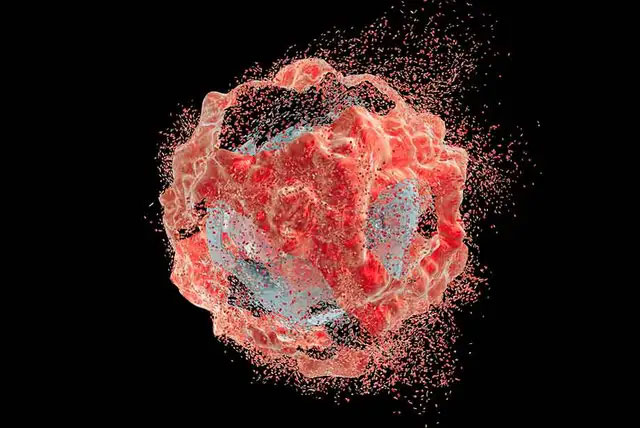
Once outside the body, the death of cells seems predetermined.
However, there are certain cells, known as immortal cell lines, that can be cultured in vitro for extended periods. Some of these originate from cancer cells.
With advancements in technology, humans have now mastered the art of artificial intervention to create immortal cell lines. In the past, they could only tirelessly search for immortal cells formed through natural mutations.
The first immortal cell line discovered by scientists was the HeLa cells, identified in 1951. And over 70 years since that time, HeLa cells are still being cultured today.
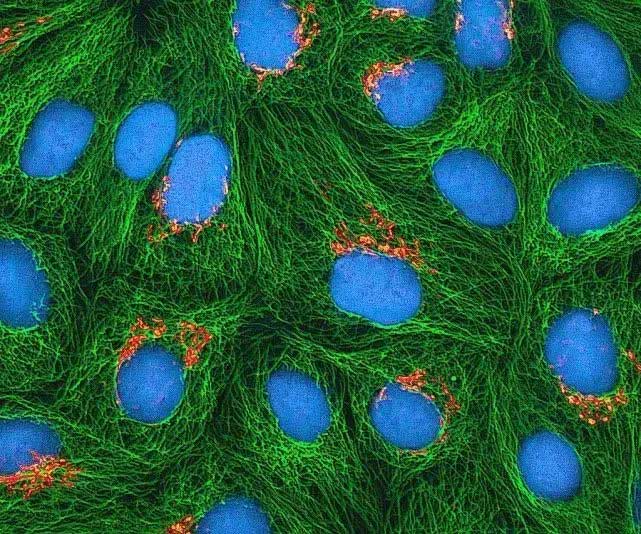
HeLa cells being cultured.
What Do HeLa Cells Look Like?
Although HeLa cells can indeed divide and proliferate continuously, they are not maintained in just one place, nor are they continuously sustained; instead, they are divided into countless parts and appear in various laboratories around the world. Each of these portions will be destroyed once used up.
This is because HeLa cells are an immortal cell line derived from human tissue, and many human-based studies utilize them for experiments to obtain the most realistic data. For example, vaccines, medications, and even facial cleansers or sunscreens utilize HeLa cells. They are also used in genome mapping and the development of the Covid-19 vaccine.
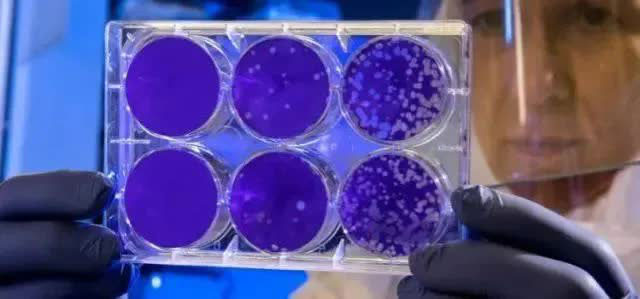
HeLa cells can replicate infinitely.
A few years after the discovery of HeLa cells, a factory for producing HeLa cells was established, aimed at cultivating these cells and selling them to other laboratories. It is believed that the factory can produce 60 trillion live HeLa cells weekly.
Data from 2011 indicated that the total mass of HeLa cells developed (including destroyed portions) at that time was at least 50 million tons.
If that number doesn’t seem alarming, consider that if you continue to support and allow these cells to divide, it is estimated that the entire Earth will not be able to contain all the HeLa cells in another 80 years.
This is because HeLa cells divide very rapidly every 20-24 hours and do not die like other cells. This means that in less than a day, their total weight could double.
These characteristics make HeLa cells unique and distinct, as before their discovery, it was very difficult to find an immortal cell from human tissue.
How Were HeLa Cells Created?
HeLa cells originate from the cervical cancer cells of Henrietta Lacks, an African American woman. In 1951, this mother of five visited Johns Hopkins Hospital in Baltimore, Maryland, and was diagnosed with cervical cancer. Due to severe racial discrimination at the time, Johns Hopkins was one of the few places willing to accept and treat Black patients.

Henrietta Lacks
Lacks initially did not know she had cervical cancer; she described pain in her groin to doctors and mentioned that the illness was interfering with her work.
At that time, her treating physician realized it was a malignant tumor after a few simple observations. A sample of her cancer cells was taken under those circumstances and sent to the nearby tissue laboratory of Dr. George Gey.
This sample of cancer cells was the first HeLa cells, which could be cultured countless times. In fact, before the emergence of HeLa cells, Dr. Gey and his team had been searching for human cells that could be cultured in vitro for years without success.
The discovery of HeLa cells was undoubtedly a major breakthrough in human medicine, as researchers could conduct numerous experiments with them, subsequently finding ways to treat diseases in humans.
In fact, HeLa cells function like “guinea pigs” in the laboratory and can be cultured at very low costs. Most importantly, they can survive in many experiments, especially comparative experiments, giving researchers more time and space to explore issues.
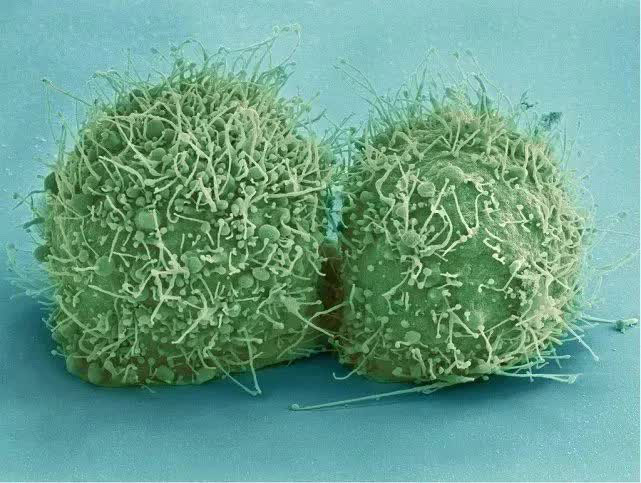
HeLa cells just divided.
Due to the exceptional nature of HeLa cells, over 65,000 scientific articles have been completed with their assistance, along with nearly 11,000 patents related to them. Just in the 21st century, there have been 5 Nobel Prizes in Medicine directly related to this immortal cell line.
Moreover, just considering two studies related to the development of the polio vaccine and the HPV vaccine, HeLa cells have contributed to saving billions of lives.
However, HeLa cells are not perfect and have many drawbacks.
What Are the Drawbacks of HeLa Cells?
HeLa cells are essentially “mutated” cervical cancer cells, as Lacks was infected with the HPV virus after developing cervical cancer. This means that Lacks’ cancer cells were infected with the HPV virus, altering their basic structure.
This caused her cancer cells to have between 76 to 80 chromosomes, whereas human cells are known to have only 46 chromosomes. These extra chromosomes are a result of the viral infection.
Therefore, HeLa cells are not truly human cells. This is one of their shortcomings, making them unsuitable for use as actual human cells.
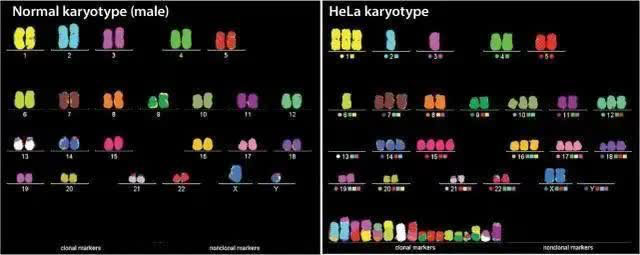
The difference in chromosomes between HeLa cells and human cells
The second drawback of HeLa cells is that they can “contaminate” other cell lines. This is the most serious drawback of HeLa cells, as during their cultivation, they release certain chemicals that contaminate other cell lines, leading many laboratories to prohibit the use of HeLa cells.
This characteristic of HeLa cells is somewhat similar to how one species suppresses others to survive, which is why some people have proposed considering HeLa cells as a separate species.
However, it is this mutation that has given HeLa cells their “immortal” capability.
Normally, during cell division, telomeres (repetitive DNA sequences at the ends of chromosomes) gradually deplete, preventing cells from dividing indefinitely. This is one of the fundamental reasons we age.
However, the mutated HeLa cells have acquired an enzyme called telomerase, which is activated during cell division and, when active, telomerase rebuilds the telomeres consumed during division, allowing the cells to proliferate indefinitely.
The Legacy of Henrietta Lacks’ Descendants
With advancements in medicine, the capabilities and contributions of HeLa cells are no longer as prominent as before. But no one can deny their contribution to the world.
Returning to the story of Henrietta Lacks, as mentioned, the doctors took her cancer cells without informing her. Therefore, despite contributing to countless scientific works and millions of tons of cells being cultivated, the Lacks family received no benefits and were even unaware that HeLa cells were related to them.
Henrietta Lacks herself was buried in a little-known grave after her death.

A life-size statue of Henrietta Lacks, unveiled at the University of Bristol in 2021.
Only recently, when it was discovered that HeLa cells were contaminating other cell lines and their genes needed to be sequenced to find out why, were the descendants of Henrietta Lacks contacted for DNA testing.
In October 2021, on the 70th anniversary of her passing, the family of Henrietta Lacks filed a federal lawsuit against Thermo Fisher Scientific for unjust enrichment and the unauthorized use of her cells and tissue samples.
- Meanwhile, Johns Hopkins University stated on its website that it “has never sold or profited from the discovery or distribution of HeLa cells” and that the university does not own the rights to HeLa cells.
- The Strange Sea Monster That May Be the “Ancestor” of All Life on Earth
- Discovering the Secret of Dinosaurs to Dominate All Species
- What’s on the $80 Million Private Jet That Elon Musk Is Eagerly Awaiting?



















































